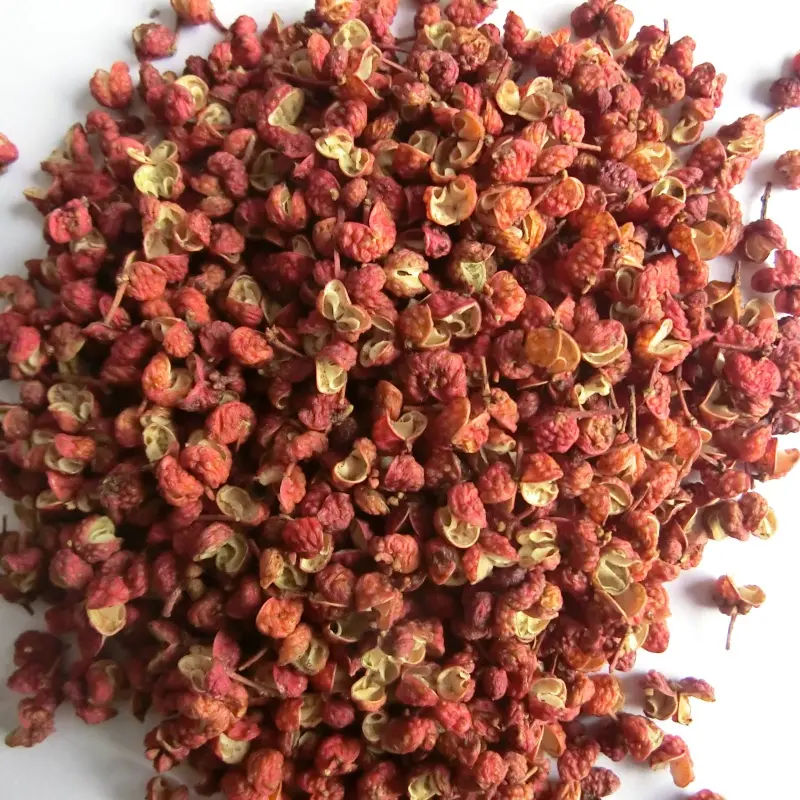Unlocking the Spice: How to Use Dried Sichuan Peppercorn
Sichuan peppercorn, known as huājiāo (花椒) in Chinese, is a quintessential spice in Chinese cuisine, particularly in Sichuan province. Contrary to its name, it is not related to black pepper or chili peppers but comes from the dried husks of the prickly ash tree's seeds. Renowned for its unique numbing sensation, Sichuan peppercorn adds a distinct character to dishes. In this article, we'll explore the origins, flavors, and versatile uses of dried Sichuan peppercorn, along with some tips and recipes to incorporate this extraordinary spice into your culinary repertoire.

The Origins and Characteristics of Sichuan Peppercorn
Sichuan peppercorn has a storied history in Chinese cooking, dating back thousands of years. It's a staple in Sichuan cuisine, celebrated for its ability to create the signature "mala" (麻辣) flavor—a combination of numbing and spicy sensations. The spice is derived from the outer husk of the seeds of various Zanthoxylum species, primarily Zanthoxylum bungeanum and Zanthoxylum simulans.
The unique sensation provided by Sichuan peppercorn is due to the presence of hydroxy-alpha-sanshool, a compound that stimulates the touch receptors in the mouth, causing a tingling or numbing effect. This sets the stage for a heightened perception of other flavors, particularly heat from chili peppers, creating a dynamic taste experience.
Preparing Sichuan Peppercorn
Before using dried Sichuan peppercorn, it’s important to prepare it correctly to bring out its best flavors. Here’s a step-by-step guide:
1. Cleaning: Dried Sichuan peppercorns often come with seeds and stems. The seeds are bitter and should be removed. Spread the peppercorns on a flat surface and pick out the black seeds and any stems.
2. Toasting: Lightly toast the peppercorns in a dry skillet over medium heat for a few minutes until fragrant. Be careful not to burn them, as this will impart a bitter taste.
3. Grinding: Once toasted, let them cool and then grind them into a powder using a spice grinder or mortar and pestle. This powder can be used directly in recipes or as a finishing touch on dishes.
Culinary Uses of Sichuan Peppercorn
Sichuan peppercorn can be used in various forms—whole, cracked, or ground—depending on the desired effect. Here are some common applications:
1. Whole Peppercorns: Used in braises, stews, and pickles. Whole peppercorns can infuse dishes with their numbing quality without overwhelming them. For instance, they are a key ingredient in the classic Sichuan dish "Shuizhu Yu" (水煮鱼), or boiled fish, where they are simmered in a spicy broth.
2. Cracked Peppercorns: Ideal for marinades and stir-fries. Lightly crushing the peppercorns releases more of their essential oils, making them perfect for marinating meats or enhancing the flavor of quick-cooked dishes.
3. Ground Peppercorns: Used as a spice rub, seasoning, or in sauces. Ground Sichuan peppercorns are incredibly versatile and can be sprinkled over dishes like a spice or mixed into sauces to provide a consistent flavor throughout.
Recipes Featuring Sichuan Peppercorn
To truly appreciate the versatility of Sichuan peppercorn, let’s dive into a few recipes that showcase its unique characteristics.
1. Mapo Tofu (麻婆豆腐)
Ingredients:
- 400g firm tofu, cubed
- 200g ground pork
- 2 tablespoons vegetable oil
- 2 cloves garlic, minced
- 1 tablespoon ginger, minced
- 1 tablespoon Sichuan peppercorns, toasted and ground
- 2 tablespoons chili bean paste (doubanjiang)
- 1 tablespoon soy sauce
- 1 tablespoon fermented black beans, rinsed and chopped
- 1 cup chicken broth
- 1 tablespoon cornstarch mixed with 2 tablespoons water
- 2 green onions, chopped
Instructions:
1. Heat the oil in a wok over medium heat. Add the ground pork and cook until browned.
2. Add garlic and ginger, sautéing until fragrant.
3. Stir in the chili bean paste, soy sauce, and fermented black beans.
4. Add the chicken broth and bring to a simmer.
5. Gently stir in the tofu cubes and cook for about 5 minutes.
6. Add the cornstarch slurry and cook until the sauce thickens.
7. Sprinkle with ground Sichuan peppercorn and green onions before serving.
2. Sichuan Peppercorn Chicken (花椒鸡)
Ingredients:
- 500g chicken thighs, cut into bite-sized pieces
- 2 tablespoons soy sauce
- 1 tablespoon Shaoxing wine
- 1 teaspoon cornstarch
- 3 tablespoons vegetable oil
- 1 tablespoon Sichuan peppercorns, toasted and crushed
- 10-15 dried red chilies
- 1 teaspoon sugar
- 2 cloves garlic, sliced
- 1 inch ginger, sliced
- 1 tablespoon sesame oil
- 2 green onions, chopped
Instructions:
1. Marinate the chicken with soy sauce, Shaoxing wine, and cornstarch for at least 15 minutes.
2. Heat the vegetable oil in a wok over high heat. Add the Sichuan peppercorns and dried red chilies, stirring until fragrant.
3. Add the marinated chicken and stir-fry until cooked through.
4. Add the sugar, garlic, and ginger, continuing to stir-fry for a few more minutes.
5. Drizzle with sesame oil and sprinkle with green onions before serving.
3. Sichuan Cucumber Salad (拍黄瓜)
Ingredients:
- 2 cucumbers
- 1 teaspoon salt
- 2 tablespoons rice vinegar
- 1 tablespoon soy sauce
- 1 teaspoon sugar
- 2 cloves garlic, minced
- 1 tablespoon Sichuan peppercorn oil
- 1 teaspoon toasted sesame seeds
Instructions:
1. Lightly smash the cucumbers with a rolling pin or the flat side of a knife, then cut into bite-sized pieces.
2. Toss the cucumbers with salt and let sit for 10 minutes, then drain any excess liquid.
3. In a bowl, mix rice vinegar, soy sauce, sugar, and garlic.
4. Pour the dressing over the cucumbers and mix well.
5. Drizzle with Sichuan peppercorn oil and sprinkle with toasted sesame seeds before serving.
Tips for Using Sichuan Peppercorn
- Balancing Act: The numbing sensation of Sichuan peppercorn can be intense. Balance it with other flavors like sweet, sour, and salty to create a harmonious dish.
- Storage: Keep dried Sichuan peppercorns in an airtight container in a cool, dark place to preserve their potency.
- Experimentation: Don’t be afraid to experiment. Try adding ground Sichuan peppercorn to non-traditional dishes like desserts (chocolate truffles with a hint of Sichuan peppercorn are divine) or cocktails (a Sichuan peppercorn-infused gin adds a unique twist).
What is the Unique Flavor Profile of Sichuan Peppercorn and How Does It Affect Dishes?
Sichuan peppercorn, known for its distinct numbing sensation, is a cornerstone of Sichuan cuisine. This spice isn't related to black or chili peppers but comes from the dried husks of the seeds of the prickly ash tree, primarily the species Zanthoxylum bungeanum and Zanthoxylum simulans.
The most unique characteristic of Sichuan peppercorn is its ability to produce a numbing and tingling sensation in the mouth, known as "má" (麻). This sensation is caused by the compound hydroxy-alpha-sanshool, which interacts with the nerve receptors responsible for touch and pain. Unlike the heat from chili peppers, which activates pain receptors, sanshool creates a numbing effect, making it a distinct sensory experience.
Flavor Profile
Numbing Sensation: The numbing effect of Sichuan peppercorn can vary from a mild tingling to a strong buzzing sensation, depending on the quantity used and individual sensitivity. This numbing allows other flavors, particularly spicy ones, to be more pronounced without overwhelming the palate.
Citrusy and Pine-like Aroma: Sichuan peppercorns also have a unique aromatic profile. They possess a citrusy, lemon-like fragrance with subtle piney notes. This aroma complements the numbing sensation, adding a refreshing and complex layer to dishes.
Mild Bitterness: While not overpowering, there is a slight bitterness in Sichuan peppercorn, especially if the seeds are included. This bitterness can be balanced with other flavors like sweet, salty, or umami.
Impact on Dishes
The numbing and aromatic qualities of Sichuan peppercorn make it a versatile spice that can transform a wide range of dishes. Here are some examples of how it impacts different types of cuisine:
Traditional Sichuan Dishes:
Mapo Tofu: This iconic dish combines tofu and ground pork in a spicy, flavorful sauce. The numbing effect of the Sichuan peppercorn enhances the heat from the chili bean paste, creating a balanced, multi-layered flavor experience.
Kung Pao Chicken: In this popular stir-fry, Sichuan peppercorns are used alongside dried red chilies, garlic, and ginger. The numbing sensation tempers the heat, making the dish more complex and enjoyable.
Modern and Fusion Dishes:
Chocolate Truffles: Ground Sichuan peppercorn can be added to chocolate truffles to create a unique dessert. The numbing and citrusy notes provide a surprising contrast to the sweetness of the chocolate, resulting in an exciting flavor combination.
Cocktails: Infusing spirits like gin or vodka with Sichuan peppercorn can create a distinctive base for cocktails. A Sichuan peppercorn-infused gin can be used in a gin and tonic, adding an unexpected twist with its numbing and aromatic qualities.
Global Cuisine:
Indian Curries: While not traditional, adding a pinch of ground Sichuan peppercorn to certain curries can introduce a new layer of complexity. The numbing effect can balance the richness and spiciness of the curry.
American BBQ: Incorporating Sichuan peppercorn into dry rubs for meats can elevate the flavor profile. The numbing sensation pairs well with the smoky and savory notes of barbecued meats.
Sichuan peppercorn's unique numbing sensation and aromatic qualities make it a versatile and transformative spice. Whether used in traditional Sichuan cuisine or in fusion and global dishes, it adds a distinctive layer of complexity that enhances the overall flavor profile. By understanding and experimenting with Sichuan peppercorn, cooks can create memorable culinary experiences that delight and surprise the palate.
197076.webp)
How Should I Store and Preserve Dried Sichuan Peppercorn for Maximum Freshness?
Proper storage of dried Sichuan peppercorn is essential to preserve its unique flavor and numbing properties. This spice can lose its potency and aromatic qualities if not stored correctly. Here’s a comprehensive guide on how to store and preserve Sichuan peppercorn for maximum freshness.
Factors Affecting Freshness
Exposure to Air: Sichuan peppercorns can lose their potency when exposed to air for extended periods. The essential oils responsible for their aroma and numbing effect can evaporate, leading to a loss of flavor.
Light: Direct exposure to light can degrade the quality of Sichuan peppercorns. Light can cause the breakdown of the compounds that give the peppercorns their unique characteristics.
Humidity: Moisture can lead to mold growth and spoilage. Sichuan peppercorns should be kept in a dry environment to prevent this.
Temperature: High temperatures can accelerate the degradation process of the essential oils. A cool, stable temperature is ideal for storage.
Storage Tips
Airtight Containers: Store Sichuan peppercorns in airtight containers to minimize exposure to air. Glass jars with tight-fitting lids, vacuum-sealed bags, or high-quality plastic containers are good options.
Cool, Dark Place: Keep the containers in a cool, dark place such as a pantry or a cupboard. Avoid storing them near stoves, ovens, or windows where temperature fluctuations and light exposure are common.
Avoid Refrigeration: While refrigeration can extend the shelf life of some spices, it is not ideal for Sichuan peppercorns. The moisture inside a refrigerator can lead to condensation, potentially causing mold growth.
Use Desiccants: Including a desiccant packet (commonly found in spice containers and medicine bottles) can help absorb any residual moisture, further preserving the peppercorns’ freshness.
Shelf Life and Signs of Spoilage
Under optimal storage conditions, dried Sichuan peppercorns can retain their freshness for up to two years. However, it’s essential to periodically check for signs of spoilage, which include:
Loss of Aroma: Fresh Sichuan peppercorns should have a strong, citrusy aroma. If the scent fades, the peppercorns may have lost their potency.
Change in Color: Fresh Sichuan peppercorns have a vibrant red-brown color. A dull, faded appearance indicates aging.
Presence of Mold: Any sign of mold or moisture in the container means the peppercorns should be discarded.
Extending Freshness
Small Batches: If you use Sichuan peppercorns infrequently, consider buying them in smaller quantities to ensure you always have a fresh supply.
Grinding as Needed: Grind Sichuan peppercorns in small amounts as needed. Ground peppercorns lose their potency faster than whole ones, so it’s best to keep them whole until use.
Vacuum Sealing: For those who buy in bulk, vacuum sealing portions and storing them separately can help maintain freshness. This method reduces air exposure and preserves the essential oils.
Using Stale Peppercorns
If you find that your Sichuan peppercorns have lost some of their potency, you can still use them creatively. For example:
Infused Oils: Even less potent Sichuan peppercorns can be used to make infused oils. The process of steeping the peppercorns in oil can help extract remaining flavors.
Pickling: Older peppercorns can be added to pickling solutions for vegetables. The vinegar and spices can help rejuvenate some of the peppercorns' lost flavors.
Broths and Stews: Incorporating stale Sichuan peppercorns into broths and stews can still impart some of their unique qualities, although in a more subdued manner.
Proper storage of dried Sichuan peppercorns is crucial to preserving their unique numbing sensation and aromatic qualities. By following these storage tips—using airtight containers, keeping them in a cool, dark place, and avoiding moisture—you can ensure that your Sichuan peppercorns remain fresh and potent for up to two years. Regularly check for signs of spoilage and consider buying smaller quantities if you use them infrequently. With proper care, you can enjoy the vibrant flavors of Sichuan peppercorns in your cooking for an extended period.
What Are Some Creative Ways to Incorporate Sichuan Peppercorn into Non-Asian Dishes?
Sichuan peppercorn, renowned for its numbing sensation and citrusy aroma, is traditionally used in Asian cuisine. However, its unique characteristics can also enhance non-Asian dishes, offering a new dimension of flavor and texture. Here are some creative ways to incorporate Sichuan peppercorn into a variety of global dishes.
1. Infused Oils and Butters
Sichuan peppercorn can be infused into oils and butters, adding a subtle numbing effect and aromatic quality to a range of dishes.
Sichuan Peppercorn Oil: Lightly toast a tablespoon of Sichuan peppercorns and add them to a cup of vegetable or olive oil. Heat gently for 5-10 minutes, then let cool and strain. Use this oil to drizzle over salads, pasta, or roasted vegetables for a unique twist.
Sichuan Peppercorn Butter: Mix ground Sichuan peppercorn into softened butter with a pinch of salt. This compound butter can be used on grilled steaks, seafood, or even spread on fresh bread.
2. Seasoning and Spice Rubs
Ground Sichuan peppercorn can be blended into spice rubs and seasoning mixes, adding an unexpected kick to meats, poultry, and fish.
Sichuan Peppercorn Rub for Meats: Combine ground Sichuan peppercorn with salt, black pepper, garlic powder, and smoked paprika. Use this rub on pork ribs, chicken wings, or beef steaks before grilling or roasting.
Seafood Seasoning: Mix ground Sichuan peppercorn with lemon zest, dill, and sea salt. Sprinkle over grilled or baked fish to enhance its flavor with a hint of numbing heat and citrusy aroma.
3. Baked Goods and Desserts
Surprisingly, Sichuan peppercorn can also be used in baking and desserts, where its numbing sensation can create intriguing contrasts with sweet flavors.
Chocolate Truffles: Incorporate a pinch of ground Sichuan peppercorn into the ganache mixture for chocolate truffles. The numbing and aromatic qualities pair exceptionally well with the richness of dark chocolate.
Citrus Cakes: Add ground Sichuan peppercorn to the batter of lemon or orange cakes. The peppercorn’s citrusy notes complement the fruit flavors, while its numbing effect adds an unexpected twist.
4. Cocktails and Beverages
Infusing spirits with Sichuan peppercorn can create unique cocktails and beverages that intrigue and delight.
Sichuan Peppercorn Gin: Infuse gin with lightly toasted Sichuan peppercorns for a few days. Use the infused gin to make a Sichuan Peppercorn Martini or a twist on the classic Gin and Tonic.
Spiced Hot Chocolate: Add a pinch of ground Sichuan peppercorn to hot chocolate for a warming drink with a surprising kick. The numbing sensation pairs well with the sweetness of the chocolate, creating a cozy yet exciting beverage.
5. Sauces and Condiments
Sichuan peppercorn can elevate sauces and condiments, adding depth and complexity to their flavors.
Sichuan Peppercorn Mayonnaise: Mix ground Sichuan peppercorn into mayonnaise along with a squeeze of lemon juice and a dash of garlic powder. Use this as a dipping sauce for fries, a spread for sandwiches, or a dressing for coleslaw.
Sichuan Peppercorn Tomato Sauce: Add ground Sichuan peppercorn to tomato sauce for pasta or pizza. The peppercorn’s unique flavor enhances the sauce, making it a perfect accompaniment to Italian dishes.
6. Pickling and Preserving
Incorporate Sichuan peppercorn into pickling brines for vegetables to add an exciting flavor twist.
Pickled Cucumbers: Add Sichuan peppercorns to the pickling brine along with vinegar, sugar, and dill. The resulting pickles will have a delightful numbing effect and aromatic flavor.
Pickled Beets: Combine ground Sichuan peppercorn with cloves, cinnamon, and bay leaves in the pickling solution for beets. The spice mix complements the earthy sweetness of the beets with a complex, layered taste.
Sichuan peppercorn’s unique numbing sensation and aromatic profile offer a versatile addition to various non-Asian dishes. By infusing oils and butters, creating spice rubs, enhancing baked goods and desserts, crafting innovative cocktails, enriching sauces and condiments, and experimenting with pickling, cooks can bring a new dimension of flavor to their culinary creations. Embracing Sichuan peppercorn in these creative ways not only expands its use beyond traditional applications but also introduces exciting and memorable taste experiences to a wide array of dishes.
What Are the Health Benefits and Nutritional Value of Sichuan Peppercorn?
Sichuan peppercorn, beyond its culinary applications, also offers various health benefits and nutritional advantages. This spice is packed with essential nutrients and compounds that contribute to its health-promoting properties.
Nutritional Value
Sichuan peppercorns are rich in several nutrients and bioactive compounds, including:
Vitamins: They contain vitamins A, B6, and C. Vitamin A is essential for vision and immune function, B6 is vital for metabolism and brain health, and vitamin C is a powerful antioxidant that supports the immune system and skin health.
Minerals: Sichuan peppercorns are a good source of potassium, iron, and manganese. Potassium helps regulate blood pressure, iron is crucial for oxygen transport in the blood, and manganese supports bone health and metabolic functions.
Fiber: High in dietary fiber, Sichuan peppercorns aid in digestion and help maintain a healthy gut. Fiber is known to regulate bowel movements and prevent constipation.
Essential Oils: The spice contains essential oils like limonene and citronellal, which contribute to its aromatic profile and have various health benefits, including anti-inflammatory and antimicrobial properties.
Health Benefits
Digestive Health: Sichuan peppercorn is traditionally used in Chinese medicine to promote digestive health. The fiber content aids digestion by adding bulk to stool and facilitating regular bowel movements. Additionally, the essential oils can stimulate the digestive tract, enhancing nutrient absorption and reducing bloating and indigestion.
Anti-inflammatory Properties: The essential oils in Sichuan peppercorn, such as limonene and citronellal, have anti-inflammatory effects. These compounds can help reduce inflammation in the body, potentially alleviating symptoms of inflammatory conditions like arthritis and muscle pain.
Antioxidant Effects: The vitamins and essential oils present in Sichuan peppercorns act as antioxidants, neutralizing free radicals and reducing oxidative stress. This can help protect cells from damage and lower the risk of chronic diseases such as heart disease and cancer.
Antimicrobial Activity: Research has shown that Sichuan peppercorn has antimicrobial properties, thanks to its essential oils. This makes it effective in inhibiting the growth of certain bacteria and fungi, contributing to food safety and possibly offering therapeutic benefits.
Pain Relief and Numbing Effect: The numbing sensation caused by hydroxy-alpha-sanshool can also provide pain relief. This compound acts on nerve receptors in a way that can dull pain, making Sichuan peppercorn a potential natural remedy for minor aches and pains.
Scientific Studies and Data
Several studies support the health benefits of Sichuan peppercorn:
Anti-inflammatory and Antioxidant Activities: A study published in the "Journal of Agricultural and Food Chemistry" found that extracts from Sichuan peppercorn exhibited significant anti-inflammatory and antioxidant activities. The study suggested that these properties could make Sichuan peppercorn useful in managing inflammatory diseases and oxidative stress-related conditions.
Antimicrobial Properties: Research in the "Journal of Ethnopharmacology" demonstrated that essential oils extracted from Sichuan peppercorn showed strong antimicrobial effects against a range of bacteria and fungi. This supports its traditional use in preserving food and treating infections.
Practical Applications
In Cooking: Incorporate Sichuan peppercorn into your diet by using it in various dishes, such as stir-fries, stews, and marinades. Its unique flavor can enhance the taste of your meals while providing health benefits.
Herbal Teas: Make a digestive herbal tea by steeping Sichuan peppercorns with other soothing herbs like ginger and mint. This can aid digestion and provide relief from bloating and indigestion.
Topical Use: For pain relief, Sichuan peppercorn oil can be used topically. Mix the oil with a carrier oil and apply it to areas experiencing muscle pain or arthritis discomfort.
Sichuan peppercorn is not only a versatile spice that enhances the flavor of dishes but also a valuable addition to a healthy diet. Its nutritional content, coupled with its anti-inflammatory, antioxidant, and antimicrobial properties, makes it beneficial for overall health. By incorporating Sichuan peppercorn into your cooking and exploring its potential therapeutic uses, you can enjoy both its culinary and health benefits.
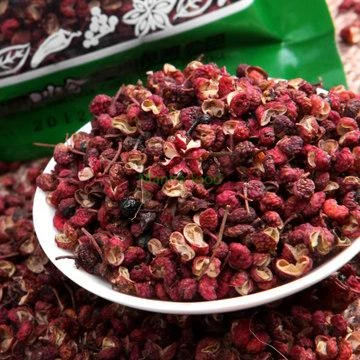
How Does Sichuan Peppercorn Compare to Other Spices in Terms of Culinary Use and Benefits?
Sichuan peppercorn, with its unique numbing sensation and aromatic qualities, stands out among other spices. However, comparing it to other common spices can provide a clearer understanding of its unique role in the culinary world and its health benefits.
Culinary Use Comparison
Black Pepper: Black pepper (Piper nigrum) is perhaps the most ubiquitous spice worldwide. Unlike Sichuan peppercorn, black pepper provides a sharp, pungent heat without any numbing sensation. It is versatile, used in virtually every cuisine, but lacks the citrusy aroma and numbing effect of Sichuan peppercorn. Black pepper’s piperine is responsible for its heat, contrasting with the sanshool in Sichuan peppercorn that provides the numbing effect.
Chili Peppers: Chili peppers, such as cayenne or jalapeño, bring intense heat to dishes due to capsaicin. While chili peppers offer a straightforward spicy heat, Sichuan peppercorn introduces a complex experience by numbing the mouth, which can enhance the perception of other flavors, particularly the heat from chili peppers. This makes the combination of the two spices (as in many Sichuan dishes) particularly effective.
Cumin: Cumin (Cuminum cyminum) has a warm, earthy flavor and is a staple in many spice blends such as curry powder and chili powder. It is commonly used in Middle Eastern, Indian, and Mexican cuisines. Cumin does not provide any numbing sensation or citrusy notes, making it quite different from Sichuan peppercorn. While cumin adds depth and warmth, Sichuan peppercorn adds brightness and a unique sensory experience.
Coriander: Coriander (Coriandrum sativum) seeds have a lemony, slightly sweet flavor. They are often used in combination with cumin. Coriander shares some citrusy notes with Sichuan peppercorn but lacks the numbing effect. Coriander’s sweetness can complement the citrusy aroma of Sichuan peppercorn in certain dishes, creating a harmonious flavor profile.
Health Benefits Comparison
Black Pepper: Black pepper is known for its digestive benefits, including stimulating the release of digestive enzymes and reducing bloating. Its piperine content also has antioxidant and anti-inflammatory properties. However, black pepper lacks the numbing and specific antimicrobial effects of Sichuan peppercorn.
Chili Peppers: Chili peppers are rich in vitamins A and C and capsaicin, which has been studied for its pain-relieving, anti-inflammatory, and metabolism-boosting effects. Unlike Sichuan peppercorn, chili peppers can significantly increase body temperature and metabolism, making them useful in weight management.
Cumin: Cumin seeds are high in iron and have antioxidant properties. They aid in digestion, help prevent bloating, and have anti-inflammatory effects. While cumin supports digestion similar to Sichuan peppercorn, it does not offer the unique numbing sensation or antimicrobial benefits.
Coriander: Coriander seeds are a good source of dietary fiber, vitamins, and minerals. They have been used traditionally to treat digestive issues, lower blood sugar levels, and provide anti-inflammatory benefits. Coriander shares some digestive benefits with Sichuan peppercorn but lacks the numbing effect and specific aromatic profile.
Practical Examples
Cooking:
Sichuan Peppercorn: Used in dishes like Mapo Tofu, Kung Pao Chicken, and Sichuan hot pots. Its numbing effect enhances the spicy heat, making these dishes more complex.
Black Pepper: Versatile, used in everything from steak seasoning to soups and sauces.
Chili Peppers: Essential in spicy dishes like Mexican salsa, Indian curries, and Thai stir-fries.
Cumin and Coriander: Key ingredients in spice blends and dishes like Indian curries, Middle Eastern falafel, and Mexican chili.
Health Benefits:
Sichuan Peppercorn: Unique numbing effect aids in pain relief and digestive health, with antioxidant and antimicrobial properties.
Black Pepper: Aids digestion and has anti-inflammatory benefits.
Chili Peppers: Metabolism-boosting, anti-inflammatory, and rich in vitamins.
Cumin: Supports digestion, anti-inflammatory, and high in iron.
Coriander: Digestive aid, blood sugar regulation, and anti-inflammatory properties.
Sichuan peppercorn stands out among other spices due to its unique numbing sensation and citrusy aroma. While other spices like black pepper, chili peppers, cumin, and coriander each have their own distinct flavors and health benefits, Sichuan peppercorn offers a unique combination of sensory and nutritional advantages. By understanding the differences and similarities, cooks can creatively incorporate these spices into their dishes to enhance flavor and health benefits.
What Are the Best Practices for Grinding and Using Sichuan Peppercorn in Cooking?
Grinding and using Sichuan peppercorn in cooking requires specific techniques to unlock its full flavor potential and achieve the desired numbing effect. Here are the best practices for preparing and incorporating Sichuan peppercorn into your dishes.
Preparation
Cleaning: Sichuan peppercorns often contain seeds and stems, which can be bitter and detract from the flavor. To clean, spread the peppercorns on a flat surface and manually remove any stems and seeds. A quick shake in a fine mesh strainer can also help separate the husks from the seeds.
Toasting: Lightly toast Sichuan peppercorns in a dry skillet over medium heat for a few minutes until they become fragrant. Toasting enhances the peppercorns' aromatic qualities and helps release their essential oils. Be careful not to burn them, as burnt peppercorns can taste bitter.
Grinding
Grinding Tools: Use a spice grinder, mortar and pestle, or coffee grinder dedicated to spices to grind Sichuan peppercorns. These tools ensure a fine and consistent grind, which is essential for even flavor distribution in dishes.
Fine vs. Coarse Grinding: Depending on the recipe, you may need finely ground or coarsely ground Sichuan peppercorn. For marinades and spice rubs, a coarse grind works well, while a fine grind is better for seasoning dishes or making spice blends.
Storage of Ground Peppercorns: Ground Sichuan peppercorn loses its potency quickly. It’s best to grind only the amount you need and store any unused whole peppercorns in an airtight container in a cool, dark place.
Culinary Uses
Flavoring Oil: Sichuan peppercorn oil is a versatile condiment that can be drizzled over dishes for an extra layer of flavor. To make the oil, toast the peppercorns and steep them in hot oil for about 30 minutes. Strain the oil and store it in a bottle. Use it to dress salads, noodles, or roasted vegetables.
Spice Blends: Sichuan peppercorn is a key ingredient in Chinese Five Spice Powder, which also includes star anise, cloves, Chinese cinnamon, and fennel seeds. This blend can be used in marinades, rubs, and stews to add depth and complexity.
Direct Application: Sprinkle ground Sichuan peppercorn over finished dishes like soups, stir-fries, and grilled meats. It can also be mixed with salt to create a flavorful seasoning salt, known as “Hua Jiao Yan,” perfect for dipping fried foods.
Marinades and Rubs: Incorporate ground Sichuan peppercorn into marinades and rubs for meats and tofu. The numbing sensation pairs well with spicy, sweet, and savory flavors, making it ideal for barbecue and roasted dishes.
Infusions: Sichuan peppercorn can be infused into broths, sauces, and spirits. For instance, adding a few peppercorns to a simmering broth imparts a subtle numbing flavor, while infusing vodka or gin with Sichuan peppercorn creates a unique base for cocktails.
Recipe Examples
Mapo Tofu: A classic Sichuan dish, Mapo Tofu features ground pork and tofu in a spicy, flavorful sauce. Ground Sichuan peppercorn is added to the sauce to enhance the heat from chili bean paste and create a complex, numbing flavor.
Kung Pao Chicken: This stir-fry includes chicken, peanuts, and vegetables cooked in a savory sauce. Sichuan peppercorns are often used whole or ground to add their signature numbing effect, balancing the sweetness and spiciness of the dish.
Sichuan Peppercorn Ice Cream: For a creative twist, add ground Sichuan peppercorn to the ice cream base. The numbing and citrusy notes provide a surprising contrast to the sweetness and creaminess, making for an exciting dessert.
Tips for Maximum Flavor
Balancing Flavors: Sichuan peppercorn pairs well with garlic, ginger, soy sauce, and vinegar. Balancing these flavors ensures that the numbing sensation enhances rather than overwhelms the dish.
Controlling Heat: Adjust the amount of Sichuan peppercorn based on your tolerance for its numbing effect. Start with a small amount and increase gradually to avoid overpowering the dish.
Experimenting: Don’t be afraid to experiment with Sichuan peppercorn in non-traditional dishes. Its unique properties can add an exciting twist to everything from savory to sweet.
Grinding and using Sichuan peppercorn correctly can significantly enhance your culinary creations. By following these best practices for preparation, grinding, and culinary application, you can unlock the full potential of this unique spice. Whether you're infusing oils, making spice blends, or adding it directly to dishes, Sichuan peppercorn’s numbing and aromatic qualities can bring a new dimension to your cooking.
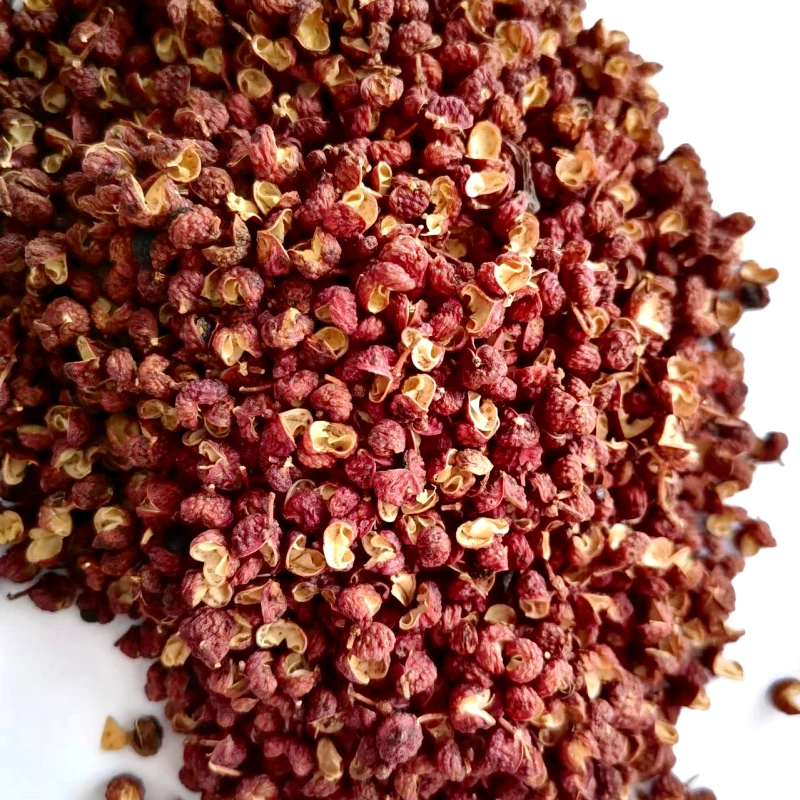
Conclusion
Sichuan peppercorn is more than just a spice—it's a gateway to a sensory experience that can elevate your cooking to new heights. Whether used whole, cracked, or ground, its distinctive numbing quality and aromatic profile can transform ordinary dishes into extraordinary culinary delights. By understanding how to prepare and use this unique spice, you can bring the flavors of Sichuan cuisine into your kitchen and create memorable meals that tantalize the taste buds and leave a lasting impression. So go ahead, explore the world of Sichuan peppercorn, and let your culinary creativity soar.
Contact us to learn more.
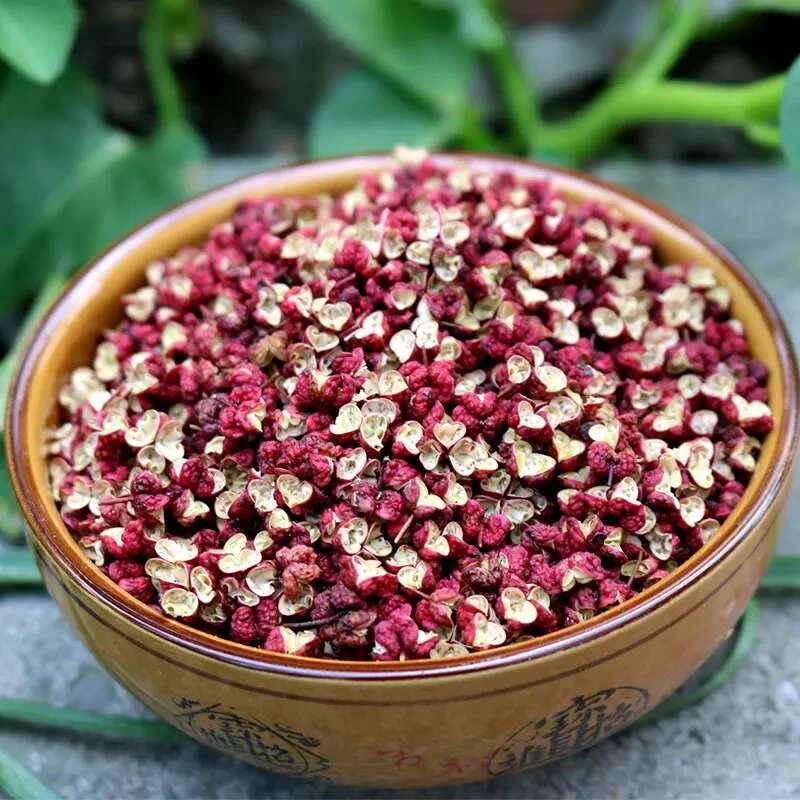


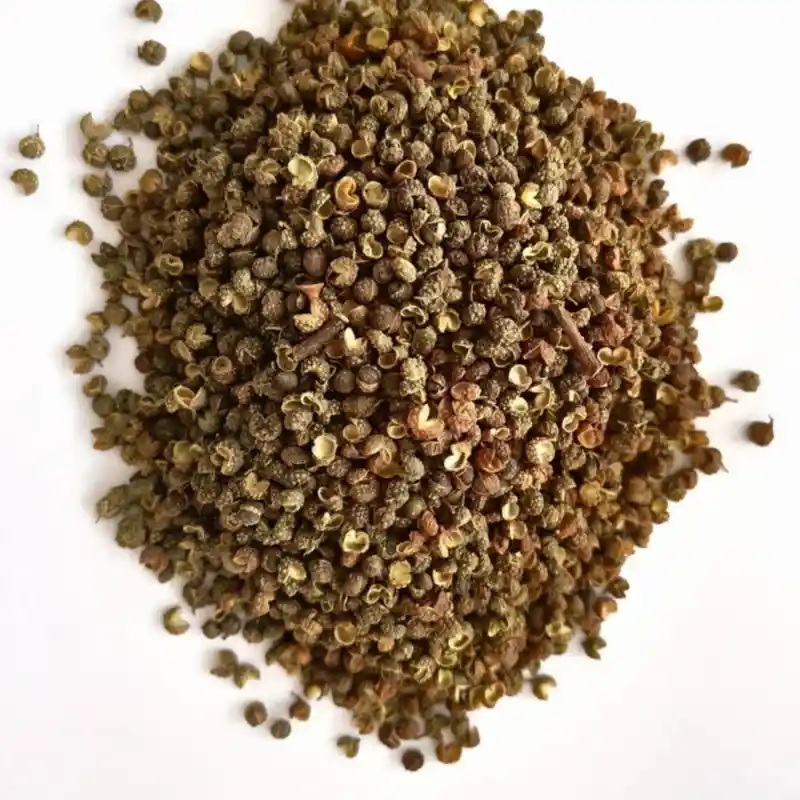
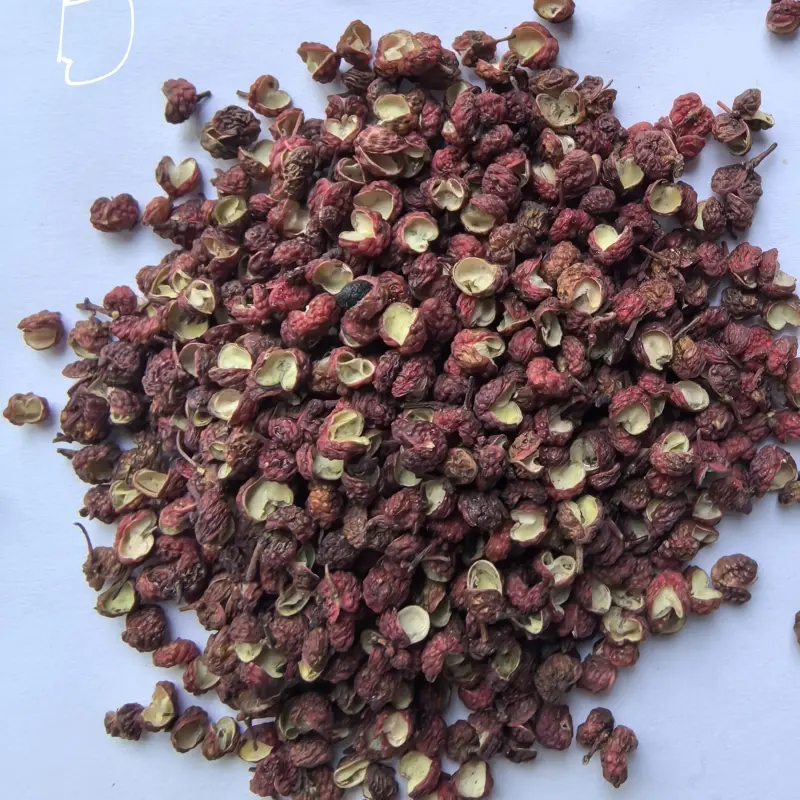
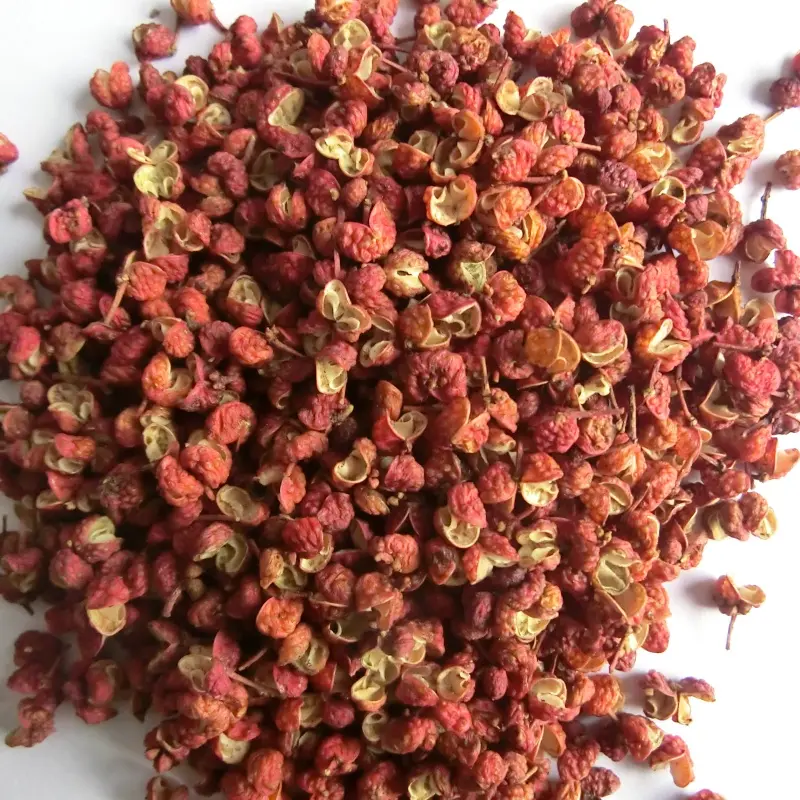
811.webp)

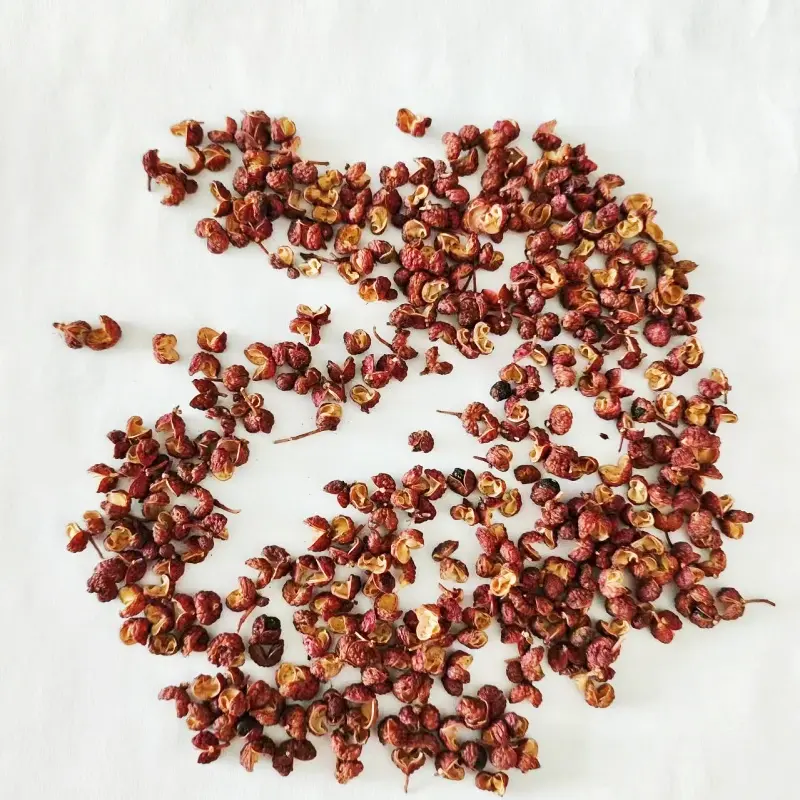

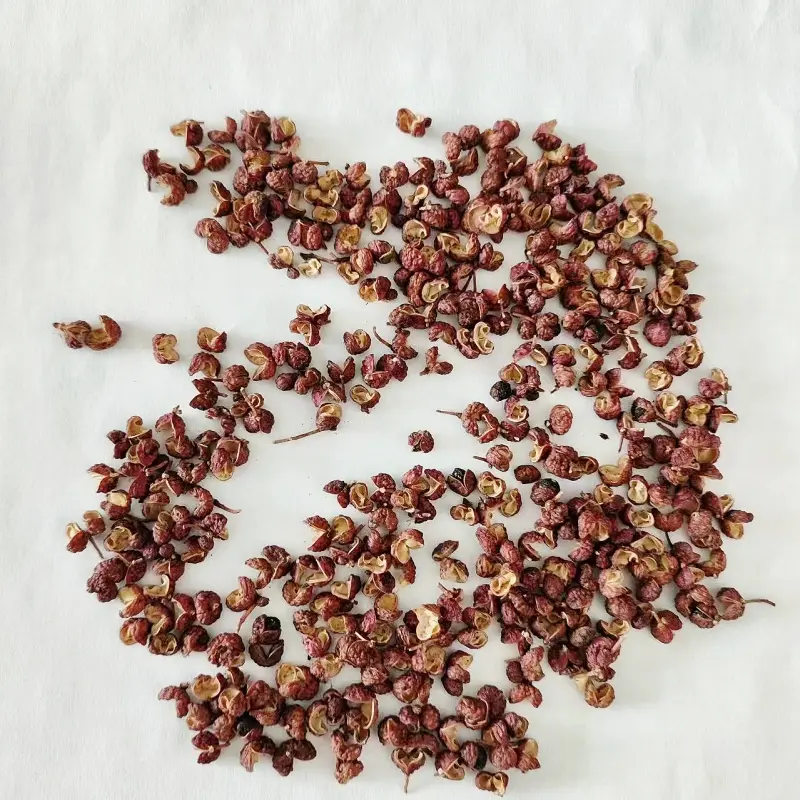
114.webp)
